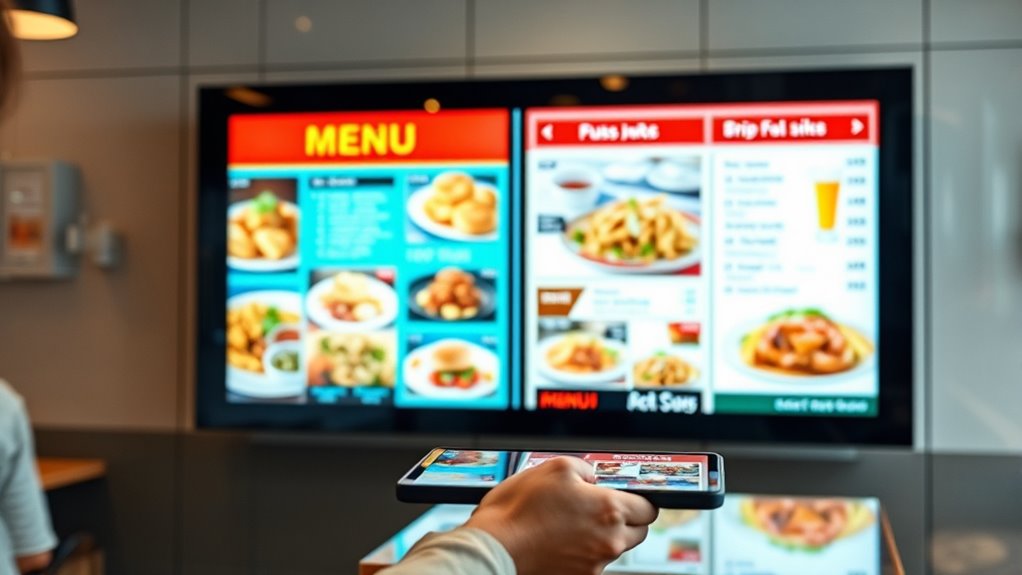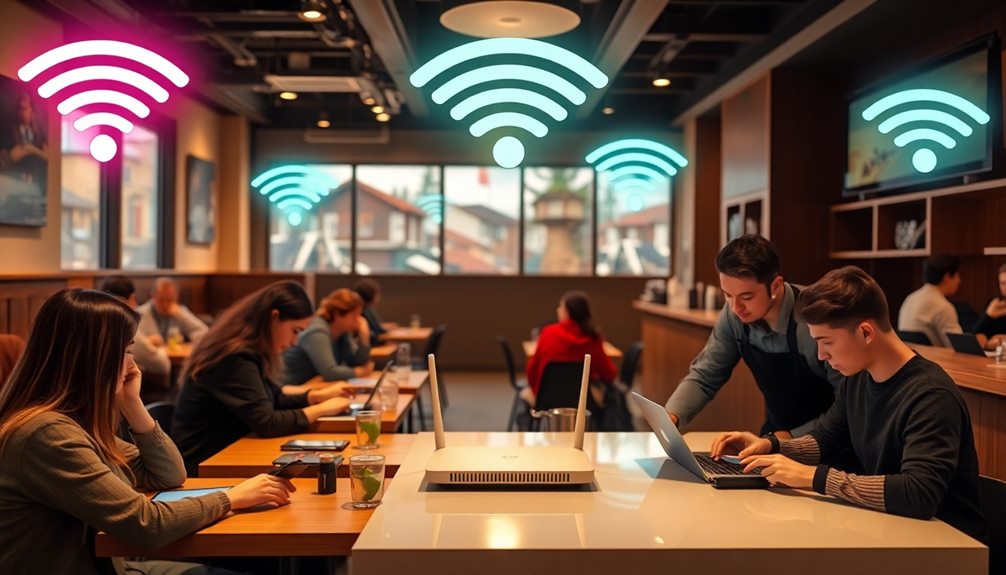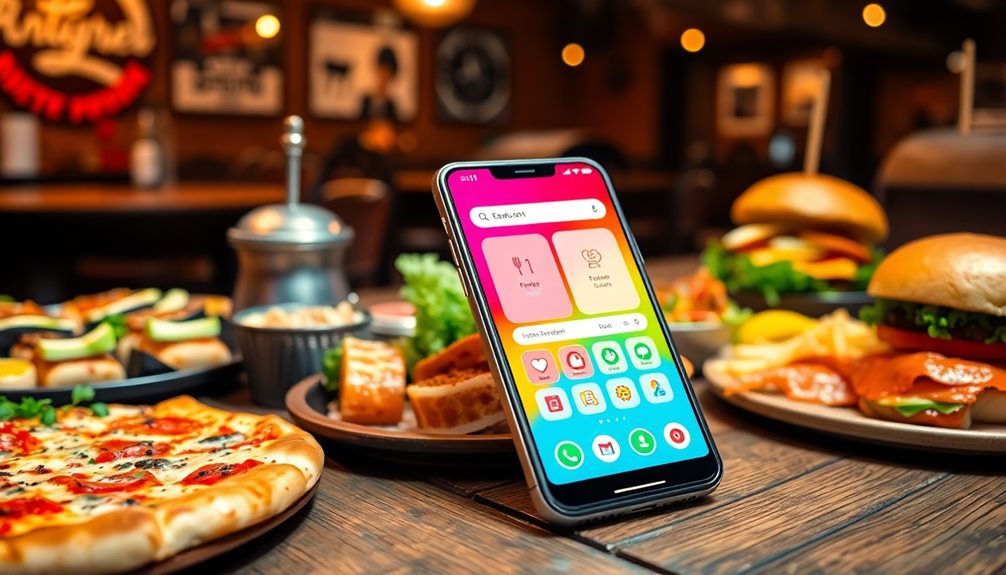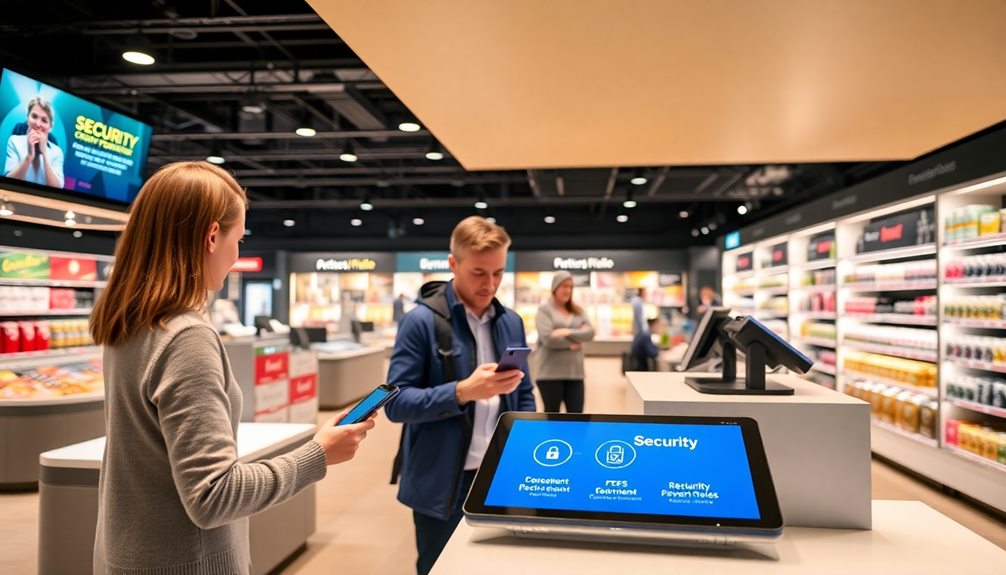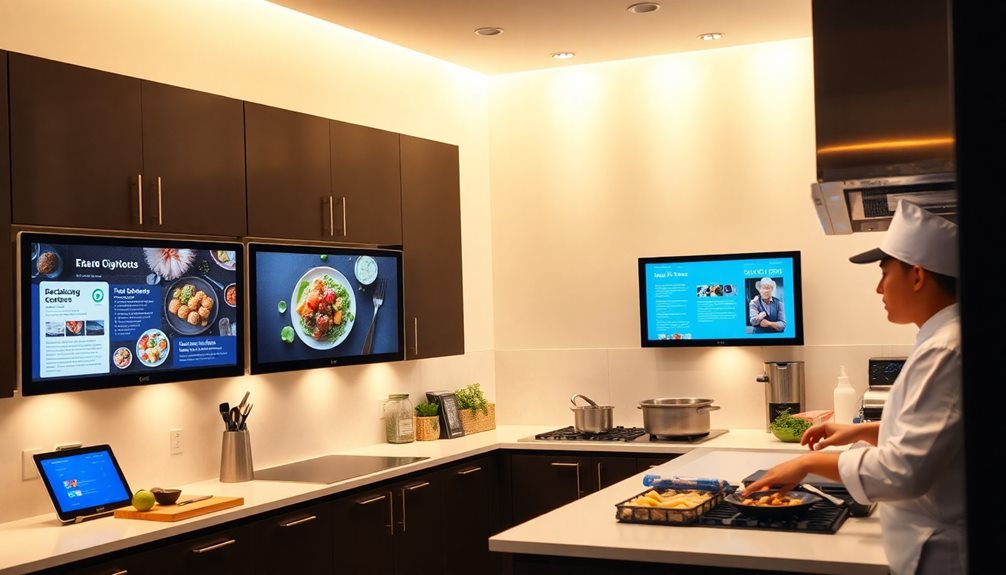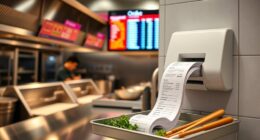Digital menu boards offer a strong return on investment by increasing sales, cutting operational costs, and boosting customer engagement with dynamic content. Factors like display size, technology, and content management influence initial expenses, but the benefits often outweigh these costs over time. They streamline updates, improve messaging efficiency, and attract more customers. To discover how these benefits add up and optimize your investment, explore further insights tailored to your needs.
Key Takeaways
- Digital menu boards boost sales through dynamic, attention-grabbing content that encourages impulse purchases and promotes high-margin items.
- They reduce operational costs by minimizing printing expenses and enabling instant menu updates, saving labor time.
- The initial investment is offset over time via increased revenue and operational efficiencies, improving overall ROI.
- Real-time content adjustments enhance customer engagement and responsiveness to inventory or promotional changes.
- Tracking KPIs like sales uplift and customer feedback helps measure the effectiveness and ROI of digital menu implementations.
Factors Influencing the Cost of Digital Menu Boards

The cost of digital menu boards can vary widely depending on several key factors. First, the size and resolution of the display notably impact the price; larger screens with higher resolution cost more but offer better visibility. The type of technology used, such as LED or LCD, also affects costs—LEDs tend to be more expensive but are more durable and brighter. Installation expenses can add up, especially if you need custom mounts or professional setup. Software licensing fees and content management systems influence ongoing costs, with more advanced platforms costing more upfront and annually. Additionally, the number of screens you plan to install impacts bulk discounts or setup fees. These factors combined determine your overall investment, shaping your budget and the potential return on investment. Display specifications can significantly influence both initial costs and long-term maintenance.
Potential Revenue Boosts From Dynamic Content

Dynamic content on digital menu boards can markedly increase your revenue by capturing customer attention and encouraging impulse purchases. By showcasing limited-time offers, popular items, or high-margin products, you create a sense of urgency that motivates customers to buy more. Bright visuals and movement draw eyes to specific menu sections, increasing their visibility and appeal. Personalized promotions, based on time of day or customer demographics, can boost sales by making offers more relevant. Additionally, updating content in real-time allows you to respond to inventory changes or special events, maximizing sales opportunities. Incorporating dynamic visuals and interactive elements further engages customers, leading to higher sales. Overall, dynamic content transforms static menus into powerful sales tools, helping you upsell and cross-sell effectively, ultimately driving higher revenue with minimal additional effort.
Operational Savings and Efficiency Improvements

Implementing digital menu boards can considerably reduce operational costs by streamlining menu updates and minimizing staff workload. Instead of printing new menus or manually changing static displays, you can instantly update content across multiple screens with a few clicks. This saves time and reduces printing expenses. Digital boards also improve efficiency by allowing real-time adjustments based on inventory, specials, or demand, helping staff focus on customer service rather than static tasks. Additionally, automation features enable scheduled updates, reducing the need for staff to intervene constantly. Overall, digital menus simplify operations, cut down on labor hours spent on manual updates, and enhance the consistency of your messaging, leading to smoother daily operations and lower ongoing costs. Incorporating data-driven strategies can further optimize menu performance and customer engagement, maximizing your return on investment.
Measuring Return on Investment in Digital Displays
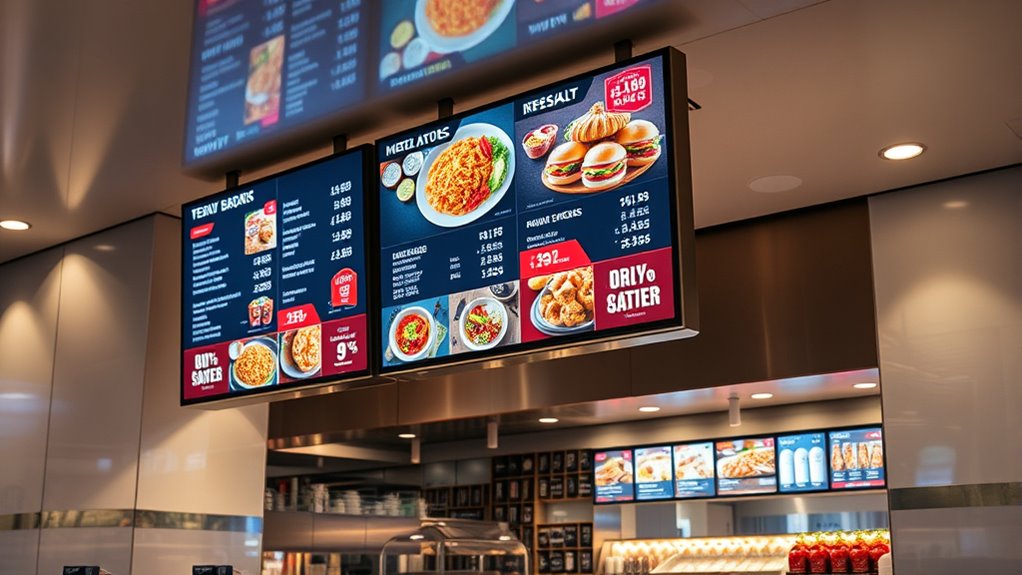
Evaluating the return on investment (ROI) for digital displays helps you determine whether the costs are justified by the benefits. To do this, track key performance indicators like sales increases, customer engagement, and operational savings. Compare the upfront costs—hardware, installation, and content management—with measurable outcomes such as higher average order values or faster service times. You can also analyze customer feedback and behavioral changes to gauge effectiveness. Using data analytics tools, you’ll identify which displays generate the best results. Remember, ROI isn’t solely about immediate financial gains; it also includes improved customer experience and brand visibility. Incorporating emotional support strategies to enhance customer satisfaction can further boost your digital signage success. Regularly reviewing these metrics ensures you’re making informed decisions about your digital display investments.
Long-term Benefits and Considerations

While digital menu boards require an initial investment, their long-term benefits can substantially outweigh these costs. Over time, you’ll save on printing expenses, since updates are made digitally, reducing paper waste and labor. They also enable you to quickly adapt to menu changes, promotions, or time-of-day specials, increasing sales and customer engagement. Additionally, digital displays attract attention more effectively than static signage, enhancing the overall dining experience. Consider ongoing maintenance and upgrades, but remember that the increased efficiency and flexibility often lead to higher ROI. Long-term, digital menu boards can boost operational efficiency, improve customer satisfaction, and keep your establishment competitive. These benefits make the initial investment worthwhile, especially as technology continues to advance and costs decrease.
Frequently Asked Questions
How Quickly Can a Digital Menu Board Project Deliver ROI?
You’re wondering how fast you can see returns on your digital menu board investment. Typically, you’ll start to notice ROI within a few months, as increased sales and operational efficiencies kick in. The quicker you implement and promote the new system, the faster you’ll recoup costs. Keep in mind, factors like location, menu updates, and customer engagement also influence how soon you’ll see measurable benefits.
What Are Common Challenges Faced During Digital Menu Board Implementation?
They say “the devil is in the details,” and that’s true for digital menu board implementation. You might face challenges like integrating new technology with existing systems, training staff, or managing content updates. Budget constraints and technical glitches can also slow progress. To succeed, plan carefully, communicate clearly, and stay flexible. Overcoming these hurdles guarantees your digital menu boards enhance customer experience and boost sales effectively.
How Do Digital Menu Boards Impact Customer Satisfaction?
Digital menu boards boost customer satisfaction by making your menu more engaging and easier to read. You can quickly update prices, specials, or menu items, which keeps your offerings fresh and relevant. Customers appreciate the visual appeal and clarity, leading to faster ordering and fewer mistakes. By creating an interactive and modern experience, you make your establishment more inviting, encouraging repeat visits and positive feedback.
Are There Industry-Specific ROI Differences for Digital Menu Boards?
Imagine digital menu boards as vibrant canvases that paint a clear picture of your business’s value. Industry-specific ROI differences come into focus based on factors like customer flow, menu complexity, and tech integration. For example, fast-food chains often see quick returns through increased sales, while fine dining might experience more subtle gains. You’ll find that understanding your industry’s nuances helps you tailor digital solutions for maximum impact.
What Maintenance Costs Are Associated With Digital Menu Boards Over Time?
When considering maintenance costs for digital menu boards, you should account for regular updates, software subscriptions, and occasional hardware repairs. Over time, expect expenses for screen cleaning, part replacements, and system updates to guarantee ideal performance. While initial setup might be costly, ongoing maintenance ensures your boards stay vibrant and functional, ultimately protecting your investment and enhancing customer experience. Staying proactive with maintenance can help prevent larger, costly issues later on.
Conclusion
Investing in digital menu boards isn’t just a smart choice—it’s the game-changer that will skyrocket your revenue and slash your costs faster than you can blink. With dynamic content and operational efficiencies, you’ll wonder how you ever managed without them. The ROI isn’t just good; it’s practically electric, transforming your business into an unstoppable juggernaut of success. Don’t wait—embrace digital and watch your profits explode beyond your wildest dreams!
